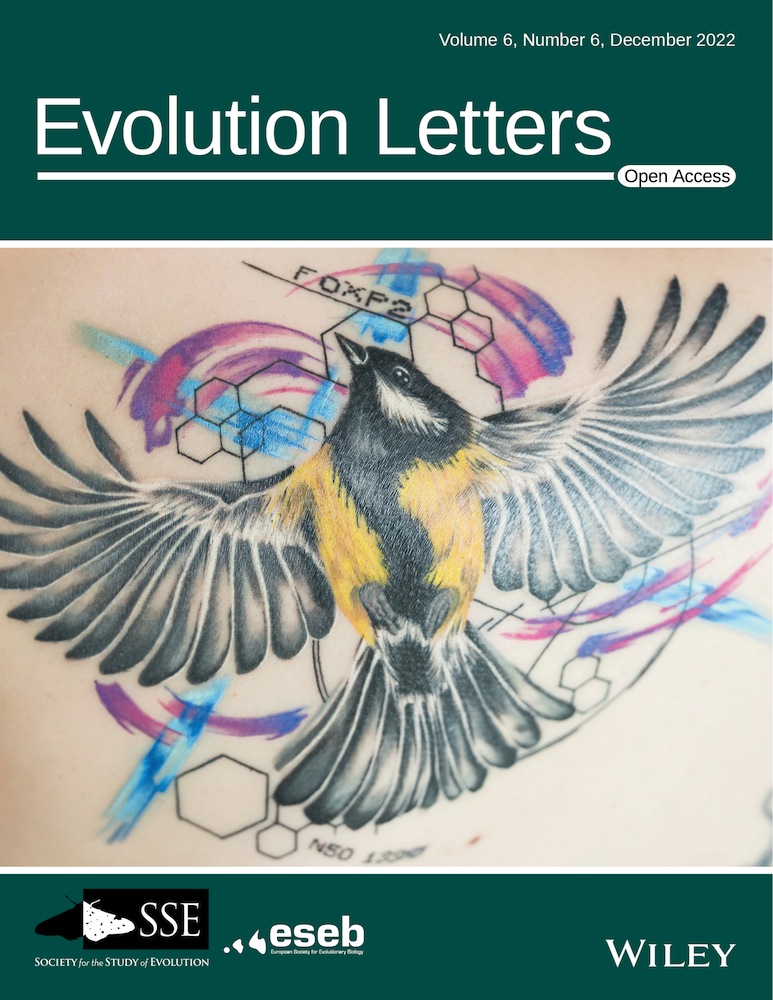Asynchronous life cycles contribute to reproductive isolation between two Alpine butterflies
IF 3.4
1区 生物学
Q2 EVOLUTIONARY BIOLOGY
引用次数: 0
Abstract
Abstract Geographic isolation often leads to the emergence of distinct genetic lineages that are at least partially reproductively isolated. Zones of secondary contact between such lineages are natural experiments that allow investigation of how reproductive isolation evolves and co-existence is maintained. While temporal isolation through allochrony has been suggested to promote reproductive isolation in sympatry, its potential for isolation upon secondary contact is far less understood. Sampling two contact zones of a pair of mainly allopatric Alpine butterflies over several years and taking advantage of museum samples, we show that the contact zones have remained geographically stable over several decades. Furthermore, they seem to be maintained by the asynchronous life cycles of the two butterflies, with one reaching adulthood primarily in even and the other primarily in odd years. Genomic inferences document that allochrony is leaky and that gene flow from allopatric sites scales with the degree of geographic isolation. Overall, we show that allochrony has the potential to contribute to the maintenance of secondary contact zones of lineages that diverged in allopatry.不同步的生命周期导致了两只高山蝴蝶之间的生殖隔离
地理隔离常常导致不同的遗传谱系的出现,这些谱系至少部分是生殖隔离的。这些世系之间的次级接触区是自然实验,可以研究生殖隔离是如何演变的,共存是如何维持的。虽然通过异时性进行的时间隔离已被认为可促进同感群落中的生殖隔离,但人们对其在二次接触时产生隔离的可能性知之甚少。我们对一对主要是异域高山蝴蝶的两个接触区进行了数年的采样,并利用博物馆的样本,我们表明接触区在几十年内保持了地理上的稳定。此外,它们似乎是由两种蝴蝶的非同步生命周期维持的,其中一只主要在偶数年成年,另一只主要在奇数年成年。基因组推断表明,异时性是有漏洞的,来自异源地点的基因流动与地理隔离的程度有关。总的来说,我们表明,异时性有可能有助于维持在异时性中分化的世系的次级接触带。
本文章由计算机程序翻译,如有差异,请以英文原文为准。
求助全文
约1分钟内获得全文
求助全文
来源期刊

Evolution Letters
EVOLUTIONARY BIOLOGY-
CiteScore
13.00
自引率
2.00%
发文量
35
审稿时长
10 weeks
期刊介绍:
Evolution Letters publishes cutting-edge new research in all areas of Evolutionary Biology.
Available exclusively online, and entirely open access, Evolution Letters consists of Letters - original pieces of research which form the bulk of papers - and Comments and Opinion - a forum for highlighting timely new research ideas for the evolutionary community.
 求助内容:
求助内容: 应助结果提醒方式:
应助结果提醒方式:


